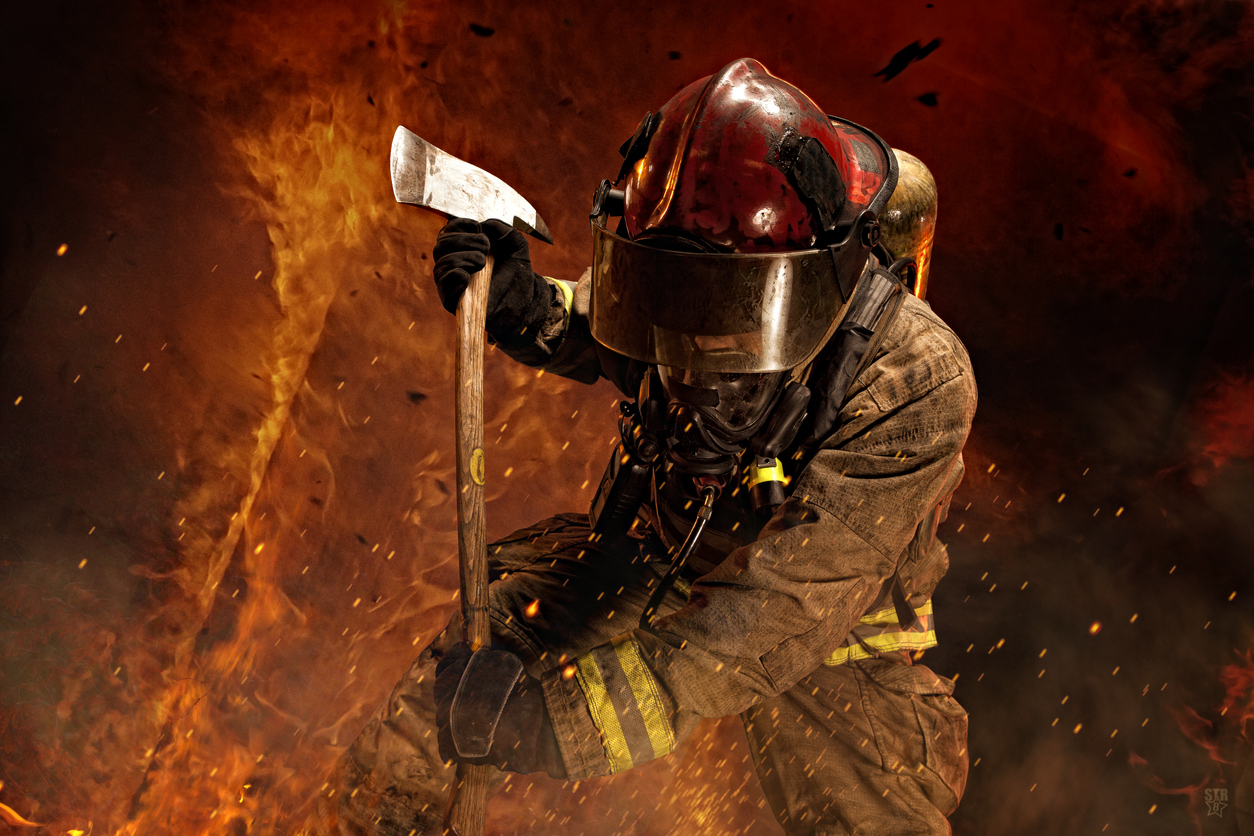
When most people think of a firefighter, the image that comes to mind is a muscular young person in the prime of life, perhaps rushing into a burning building to rescue a child. Most Americans revere firefighters as real-life superheroes, and rightly so. Therefore, it is shocking to learn that these seemingly invincible humans develop cancer more frequently than the general public. Understanding the cause of this phenomenon is essential to helping firefighters protect themselves in the workplace.
Why Firefighters Are at Risk for Cancer
A fire suit is a familiar sight and a popular Halloween costume for children. It protects firefighters from flames, but it also acts as a barrier between them and the toxic fumes that burning building materials produce. Unfortunately, no fire suit keeps out all of these chemicals, and clouds of polycyclic aromatic hydrocarbons, asbestos, and other known carcinogens frequently engulf the firefighters. These compounds penetrate their personal protective equipment and enter their bodies through the lungs, eyes, nose, and skin.
Unlike viral infections, cancers develop over years instead of days; thus, many firefighters do not show symptoms until post-retirement. This delay between cause and effect made the link between cancer and the firefighting profession unknown for many years. Research now shows that firefighters experience higher risks of the following cancers than the rest of the population does:
- Testicular, prostate, and breast cancer
- Multiple myeloma
- Non-Hodgkin’s lymphoma
- Brain cancer
- Skin cancer and malignant melanoma
- Colon cancer
- Leukemia
How Firefighters Can Protect Themselves
While firefighters do not have a choice about the types of smoke they must work in, they can continue wearing PPE in situations where they might ordinarily remove it. For example, instead of taking off their self-contained breathing apparatuses when gas detectors indicate the fire is out, they can keep them on to protect themselves from invisible toxic particles still floating in the air. They also can choose to wear full PPE during salvage procedures and to put it on when fighting smaller car or dumpster fires.
Firefighters should bathe immediately after a fire to remove contaminants from their skin, and they should not transport unwashed PPE inside their cars. If volunteer firefighters must take their gear home, the fire chief should provide them with plastic bags or bins to store items until they can wash them. Full-time firefighters should not leave contaminated PPE lying around the station’s living or sleeping areas. Here are some other important steps to keep PPE and SCBA working properly:
- Consult the National Fire Protection Association’s guidelines for cleaning and maintenance
- Test SCBA before and after use
- Wear SCBA while decontaminating other gear
- Do not wash PPE at home or in public
- Destroy damaged gear
About Provident Fire Plus
At Provident Fire Plus, we offer custom-tailored packages to best protect firefighters and volunteer firefighters. We understand the risks that emergency response teams are subjected to on a daily basis, and have worked to serve these dedicated professionals for over 87 years. For more information about our products and policies, we invite you to contact our experts today at (855) 201-8880.

